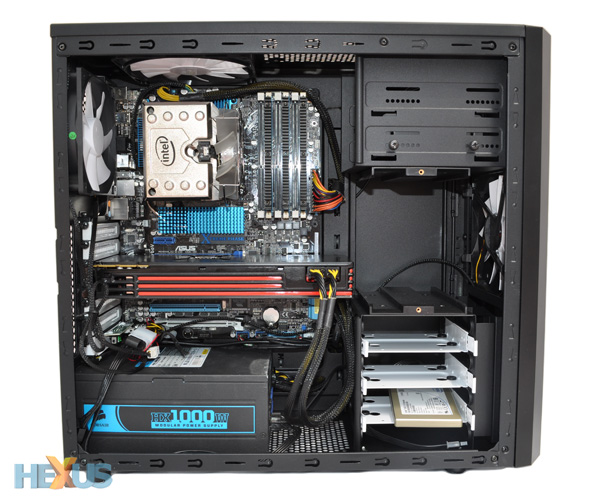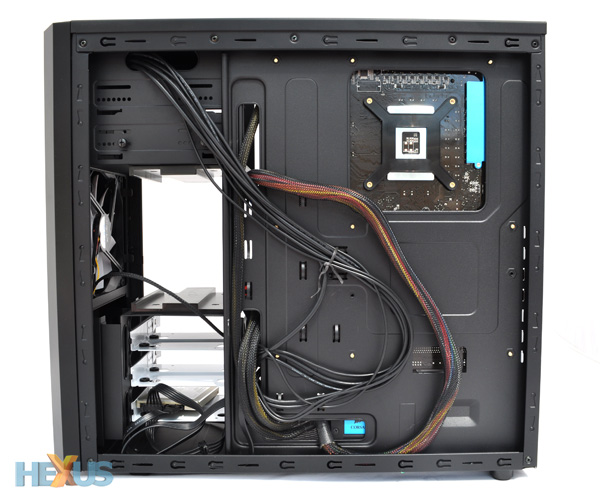What's it like to work with?

Opening up the Core 3000 chassis reveals ample room for a mid-to-high-end build. A choice of Mini ITX, Micro ATX and ATX motherboard form factors are supported, and there's a healthy selection of expansion options.
In addition to the seven white-painted PCI slots, the Core 3000 provides room for a bottom-mounted power supply with pull-out dust filter, two 5.25in optical drives - one of which features a 5.25in-3.5in converter should you need it - and six 3.5in/2.5in storage bays split across two cages. The topmost cage is removable to allow for extra-long graphics cards, and the chassis' main compartment is deep enough to support CPU coolers measuring up to 160mm in height.
There's a good-sized cutout in the motherboard tray to help with CPU cooler installation, and on the whole, the internal compartment looks every bit as sleek as the exterior. Build quality is generally good, and little touches such as a pull-to-release front panel and rubber grommets on the metal hard-disk trays make it feel more expensive than it is.
But there are a couple of key tradeoffs when compared to Fractal's award-winning Define R3; there are no noise-absorbing materials on the Core 3000 side panels, and the number of cutouts for cable routing has been reduced from six to three. As a result, building into the chassis requires a bit of thought - and even then, maintaining a clean, clutter-free installation isn't as easy as it should be.

Our high-end test bench slots in comfortably with a drive cage removed, but the build process wasn't free from niggling issues. For example, none of the drive bays are tool-free, and as shown above, our high-end HX1000W power supply covers part of the bottom-mounted fan slot. If you're planning on having a 120mm fan there, you'll need a power supply measuring less than 160mm in depth.
The Core 3000's most obvious shortcoming, however, is its limited number of cable routing holes. There are no cutouts above the motherboard - making it difficult to route a cable from our power supply to the CPU's EATX 12V connector - and the cutout beneath our ATX board is partly obscured by the power supply. Cable routing isn't one of the Core 3000's strong points, and Fractal's bundled fan controller only adds to the clutter.
To be used in an unoccupied PCI expansion slot, the bundled-and-entirely-optional fan controller draws power from a molex connector and provides a simple dial for lowering or raising the speed of up to three fans. It works well enough, and it's nice to see a fan controller included at this price point, but it feels like an afterthought - it's positioning in relation to the default fans makes a tidy build almost impossible, and having the speed dial located at the rear of the chassis is far from ideal.

Looking in around the back of the motherboard tray reveals just enough room to store excess cabling, but it's a tight squeeze for our 24-pin motherboard power cable.
You can build a high-end rig into the Core 3000 and leave it looking tidy, but there's not a lot of wow factor and you do get the impression that this is more than just a small step down from the £80 Define R3.











